The Victorian coast experienced extremes of wind, storm, swell and tides over the last month that inundated parts of the Great Ocean Road and low-lying public and private land. It also led to rapidly changing conditions at the mouths of many of the state’s estuaries, where rivers meet the sea.
The Corangamite region has more estuaries than anywhere in Victoria, and the Corangamite Catchment Management Authority (CMA), the statutory authority responsible for regulating artificial estuary openings, has been busy.
“When our coastline experiences a low-pressure system like we saw recently, the status of an estuary mouth can change within hours. The wild weather provided a glimpse of the coastal inundation and erosion that is becoming more frequent with a changing climate and rising sea levels,” said Corangamite CMA CEO Dr Amber Clarke.
“In the Corangamite region, most of our estuaries naturally alternate between having an open channel to the sea to being disconnected by the build-up of sand at the river mouth. When estuaries are closed, low lying land and assets can become inundated. To reduce flood risk to major roads, properties and infrastructure, estuaries can be artificially opened to the sea using an excavator if conditions allow for a safe and effective opening.
“The Curdies estuary was safely artificially opened just prior to the storms, easing local flood risks. In Breamlea, it was disappointing to see an illegal attempt to open the Thompson Creek estuary, where an excavated channel reached the sea in late August. This could have resulted in significant environmental impacts to native fish and birds at the site.”
Both the Curdies and Thompson Creek estuaries closed naturally to the sea within a week of their opening.
“This demonstrates how dynamic our coast is and how short-lived human interventions like artificial estuary openings can be in this environment,” said Dr Clarke.
“Wherever possible current research indicates it is best to leave estuaries to operate naturally to maintain the health of waterways, vegetation and wildlife.
“The Aire and Gellibrand estuaries were closed to the sea prior to the storm event hitting the coast, leading to high water levels. An artificial estuary opening to mitigate flooding was not possible until conditions eased allowing for safe access– the safety of workers is paramount. The Gellibrand estuary entrance opened naturally, and the Aire estuary mouth was artificially opened on 10 September once conditions eased.
“As the sea level continues to rise over the coming decades, more land and assets will become inundated more frequently and it will become increasingly difficult to safely open estuary entrances out to the sea. Also, modelling suggests that the effectiveness of artificial estuary openings in the future may decline.
“This is why we must urgently continue our work to understand and communicate the future impacts of climate change and sea level rise for coastal communities. Our focus and effort must move past short-term solutions, to planning and delivering resilient coastal communities that can adapt to these conditions for the long term.”



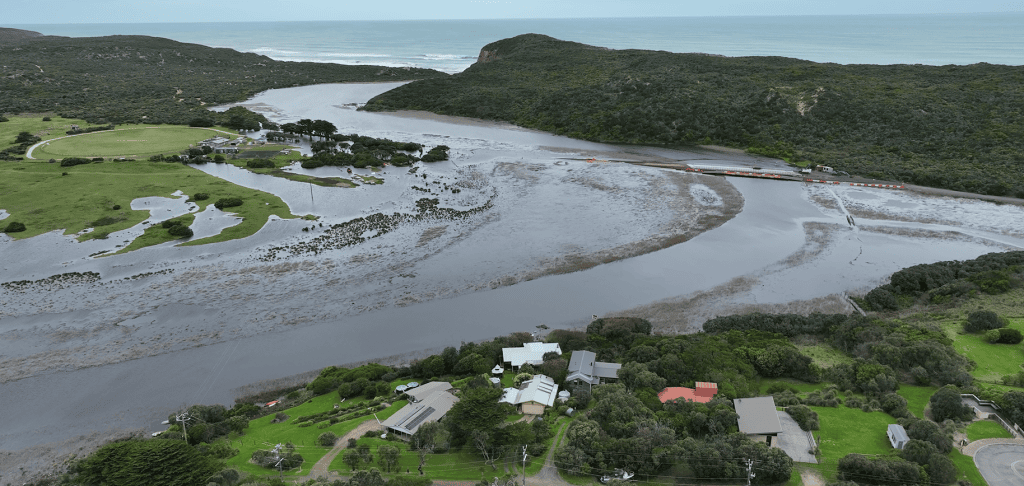
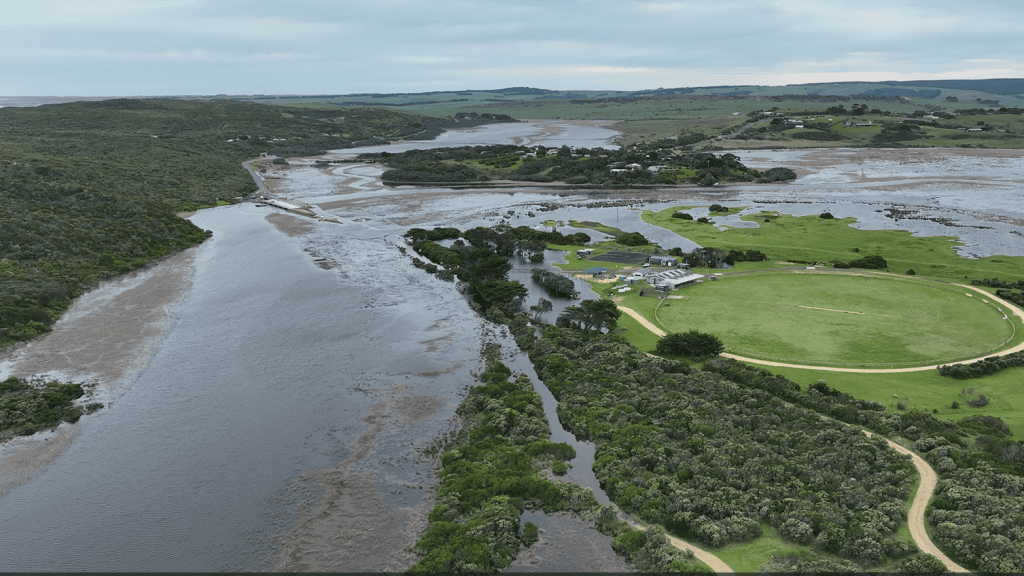
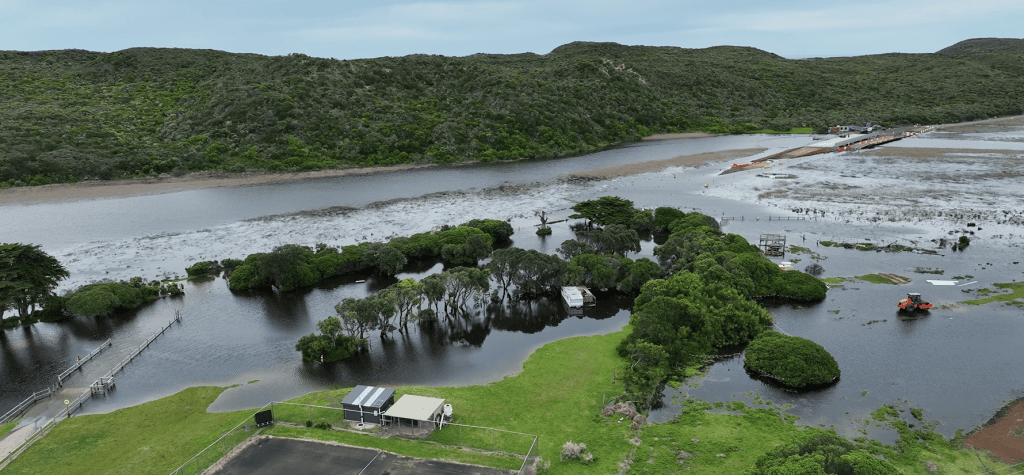
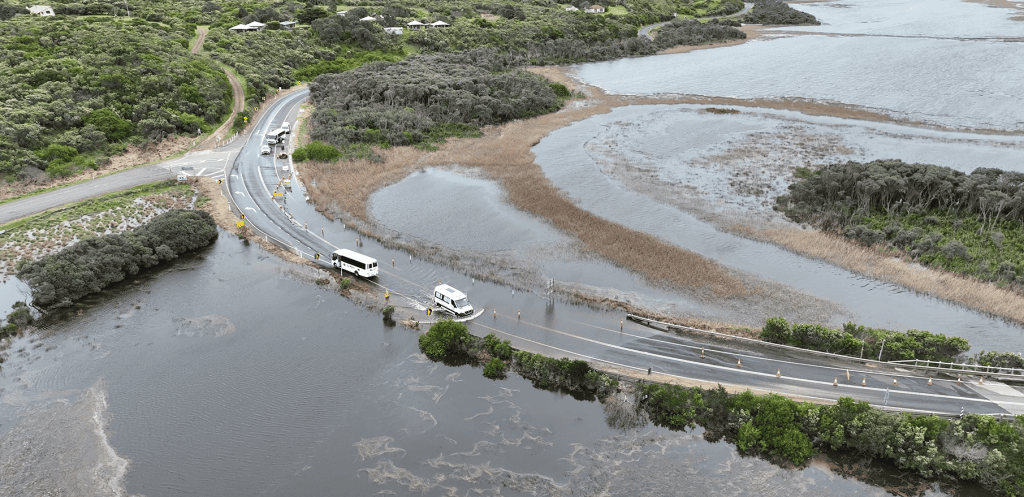
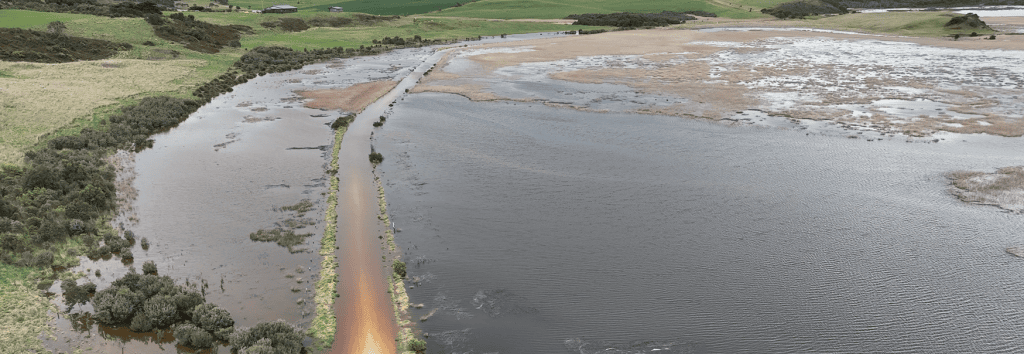
Aerial images taken on 4 September 2024
64 Dennis Street, Colac VIC 3250
PO Box 159, Colac, VIC 3250
Hours: 8:30am – 5pm, Monday to Friday
T: 1800 002 262
E: info@ccma.vic.gov.au
BARWON WATER OFFICES
Hours: 8:30am – 5pm, Monday to Friday
All mail must be sent via our Colac office
PO Box 159, Colac, VIC 3250
T: 1800 002 262
E: info@ccma.vic.gov.au
 Close
Close